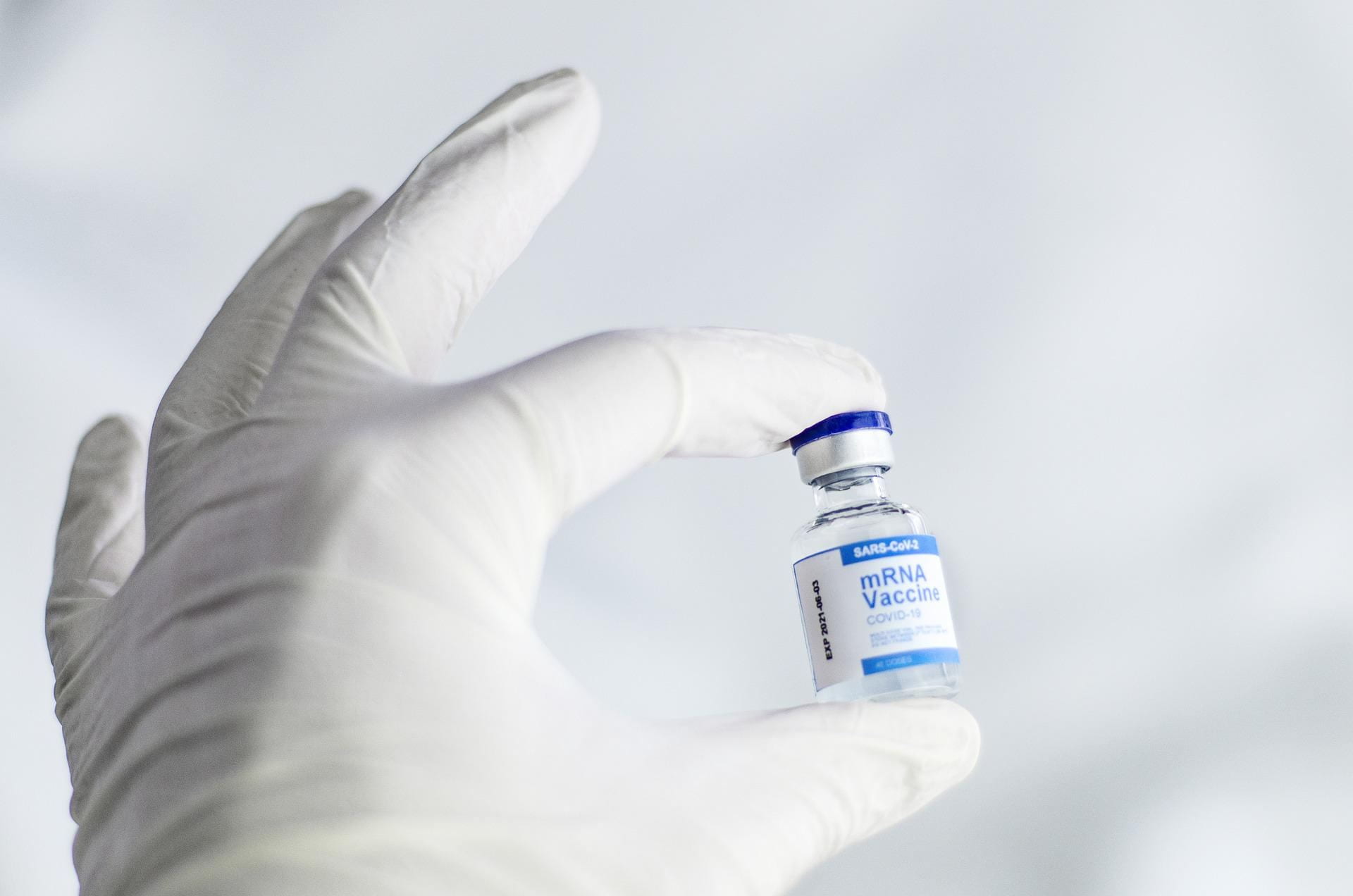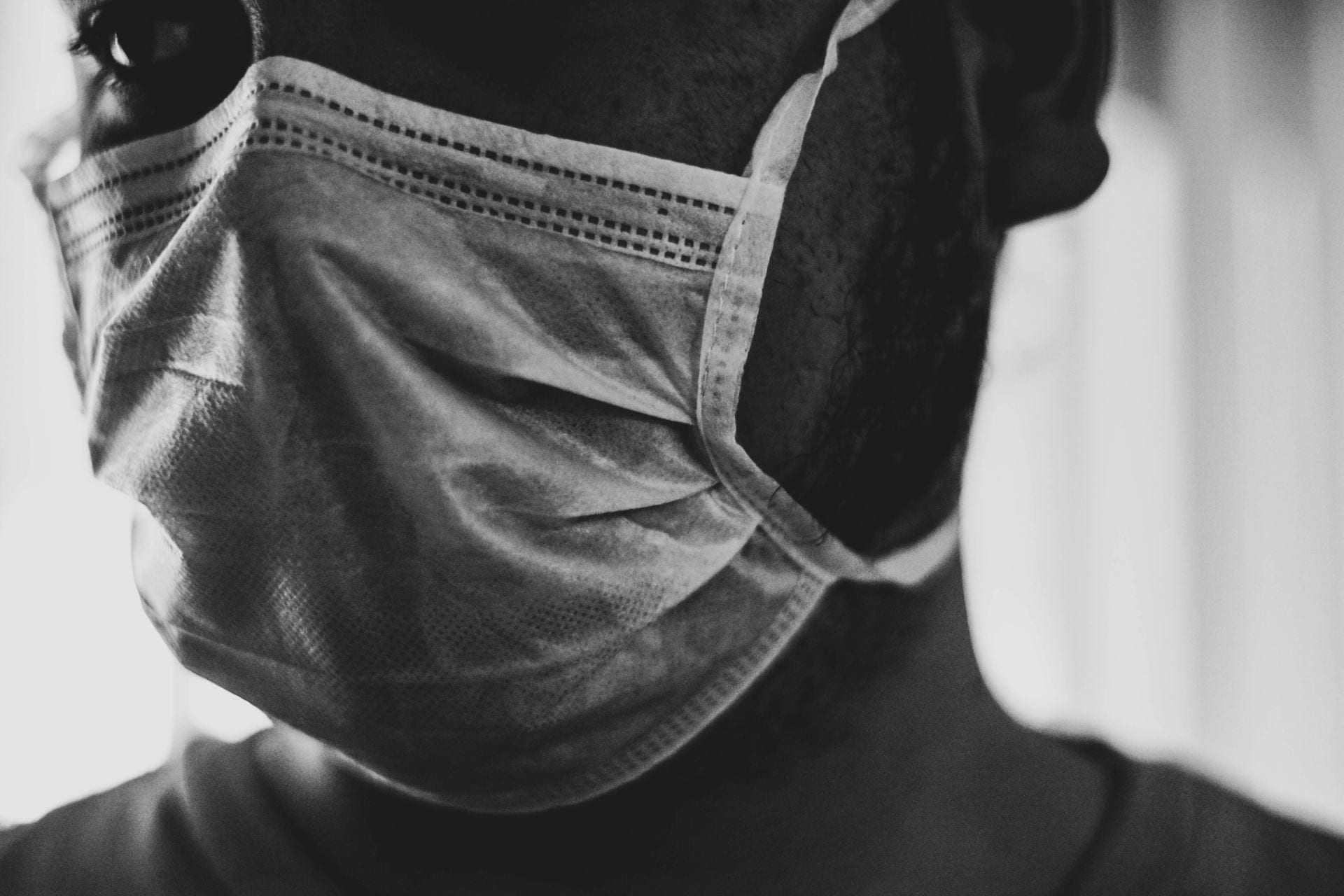
January 2020
1 December Cases of unknown pneumonia surface in Wuhan, China
31 December (International) New virus reported to World Health Organisation
15 January (International) First case reported outside of China (Thailand)
24 January (International) Cases reported in Malaysia, Japan, South Korea, Taiwan, Hong Kong, Macau, Canada, France, and the United States (International) Virus confirmed to be transmissible
25 January (International) First three cases confirmed in Australia
28 January Ministry of Health sets up National Health Coordination Centre (NHCC)
30 January Infectious & Notifiable Diseases Order issued, requiring health practitioners to report any suspected cases
February 2020
3 February Government announces that foreign travellers who left from China would be denied entry to New Zealand, with only New Zealand citizens and permanent residents and their family being allowed to enter. Foreigners who left China and spent at least 14 days in another country are permitted to enter New Zealand.
7 February Ministry of Health set up a dedicated Healthline freephone number for COVID-19-related calls.
8 February 2 New Zealanders aboard the cruise ship Diamond Princess in Japan are confirmed to have the virus
11 February (International) WHO names the new disease COVID-19, short for coronavirus disease 2019 (International) Total deaths exceed that of the SARS koutbreak of 2002-2004
17 February (International) First person outside of Asia dies (Chinese tourist in France)
24 February Ban on foreign travellers who left from China extended by eight days
28 February First confirmed case in New Zealand Government extends travel restrictions to include travellers from Iran
March 2020
2 March Government announces any person who has visited northern Italy, South Korea must self-isolate for 14 days
4-7 March Second, third, fourth, and fifth cases confirmed (daily increases from there), including first person-to-person transmission in New Zealand
10 March (International) Italy goes on national lockdown
11 March (International) WHO declares an official global pandemic
12 March (International) United States suspends travel from Europe
14 March New Zealand starts announcing new cases daily, and that anyone arriving in the country must self-isolate for 14 days (save those from the Pacific)
16 March Prime Minister announces that any tourists that don’t self-isolate for 14 days will be deported. Air New Zealand halts share trading, Reserve Bank announces emergency cut of the Official Cash rate.
17 March New Zealand Government announces $12.1 billion economic assistance package, including a $500 million boost for health, $8.7 billion in support for businesses and jobs, and $2.8 billion for income support.
18 March 20 confirmed cases
19 March 28 confirmed cases. All indoor gatherings of more than 100 people are cancelled. New Zealand Government closes the borders to everyone but citizens and permanent residents (first time in history)
20 March 39 confirmed cases
21 March 52 confirmed cases. Prime Minister announces the new alert level system and that the country was moving to level 2
22 March 66 confirmed cases
23 March 102 confirmed cases (including first two cases of community transmission). Prime Minister announced country would, effective immediately (1.40pm) enter alert level 3, and that after Wednesday the country would go into alert level 4 for at a minimum 4 weeks.
24 March 155 confirmed cases
25 March 205 confirmed and probable cases. National State of Emergency declared at Parliament 12.21pm. Country entered alert level 4 at 11.59pm
29 March First NZ coronavirus-related death reported
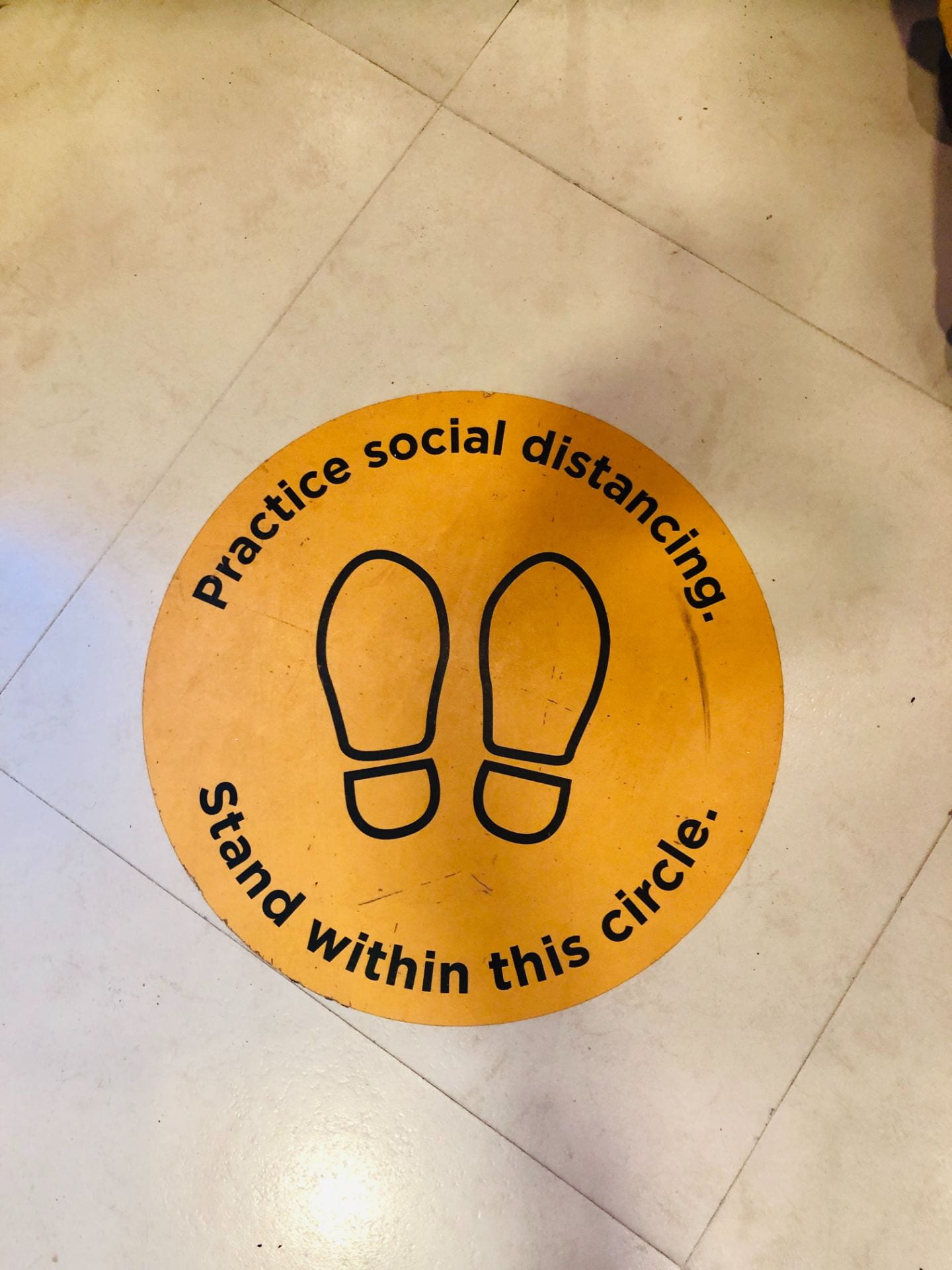
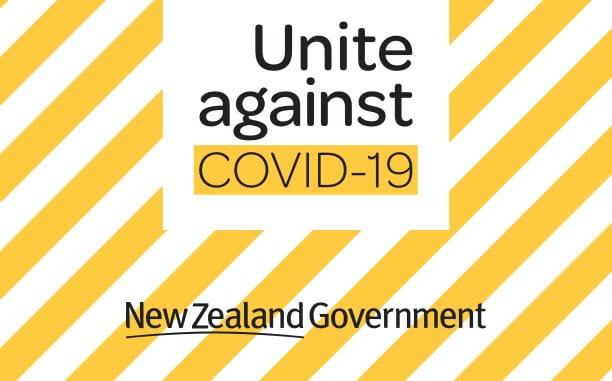
April 2020
2-5 April NZ peak level of new cases reached (89)
3 April (International) One million cases recorded worldwide. Finance Minister announces changes to the Companies Act to help struggling businesses
5 April Ethnicity statistics are released on the cases
6 April (International) UK Prime Minister Boris Johnson hospitalised
7 April First time the number of active cases dropped (recoveries outnumbered new cases)
9 April Compulsory 2 week quarantine for New Zealanders arriving the country announced, to commence by end of the day
15 April (International) Two million cases recorded worldwide
13-19 April Death toll rose to 12
18 April (International) WHO releases data on cases by age and sex
20 April Prime Minister announced that the country would drop down to alert level 3 at 11.59pm on 27 April, and that the plan was to remain at level 3 for a minimum of 2 weeks, with a decision made on 11 May on whether to drop to level 2
27 April (International) Global death toll surpasses 200,000 and cases are expected to soon break 3 million Country moves to alert level 3 at 11.59pm, 19 deaths.
May 2020
4 May First day in New Zealand where the reported new cases were 0 (this was repeated the follow day, May 5th)
9 May (International) Globally, the number of cases passes 4 million, with a death toll of 282,000. New Zealand’s death toll is at 21.
11 May The Prime Minister announces that a staggered move into Alert Level 2 will occur from 14 May
14 May New Zealand enters Alert Level 2 with no new cases for third day. Deaths remain at 21. $50 billion recovery package is announced as part of Budget 2020.
15 May (International) more than 4.75 million cases worldwide, more than 316,000 deaths, and more than 1.75 million have recovered.
17 May One new case of COVID-19 is reported in New Zealand, 45 active cases, with 1433 people having recovered and 21 deaths
22 May One new case of COVID-19 is reported in New Zealand
24 May New Zealand’s death toll rises to 22.
29 May 7 days in a row with no new cases in New Zealand, and one active case remaining
June 2020
3 June 12 days in a row with no new cases in New Zealand, one active case remaining Globally, nearly 6 & a half million recorded cases has been reached, with nearly 400 thousand deaths associated with COVID-19
8 June The one active case in New Zealand is announced as having recovered, and with no new cases for 17 days, New Zealand is declared COVID-19 free. The Prime Minister announces that Alert Level 1 (normalcy, but with closed international borders and contact tracing) will begin at midnight.
9 June Alert Level 1 begins in New Zealand.
16 June After 24 days with zero new cases, Health Minister David Clark suspends compassionate exemptions for quarantined travellers, after two women who had been granted such to leave quarantine early (to attend a funeral) test positive. In days following, further information about the two women emerges, leading the Prime Minister to describe the release as a “failure of the system”
22 June Total number of active cases is nine, all in managed isolation after arriving in the country. Prime Minister announces that in order to leave managed isolation, people would need to test negative. Ban on cruise ships extended beyond 30 June.
24 June Announcement made that 51 of the 55 people granted early leave on compassionate grounds from managed isolation had not been tested at the time for COVID-19.
29 June Total cases in New Zealand reaches 22, all returnees to New Zealand in managed isolation. Face-masks become mandatory for returnees in managed isolation. Globally, the total number of cases tops 10 million, with more than 500,000 deaths (1 million new cases with recorded in the 6 days prior to 29 June)
30 June Victorian Government in Australia re-established local lockdowns across 10 different postcodes in Melbourne after a cluster of new cases emerges.
July 2020
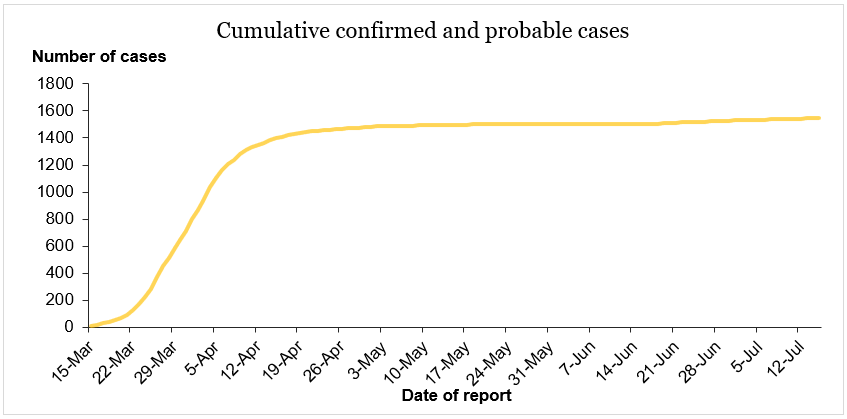
2 July Health Minister David Clark resigns from his portfolio, following criticism of his leadership and actions (Chris Hipkins takes over as interim Health Minister, and Megan Woods takes over responsibility for Border Management)
4 July An additional 2 postcodes and 9 public housing towers are added to the Melbourne lockdown
6 July 127 new cases reported in Melbourne. Victorian and NSW governments announce interstate border will close from 8 July.
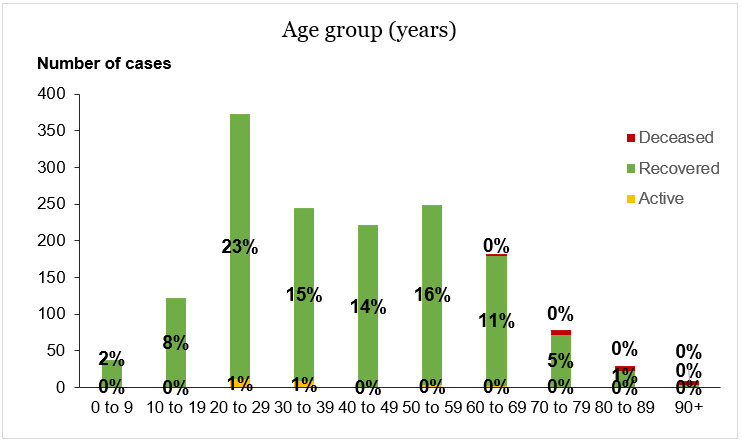
7 July NZ Government asks Air NZ and Singapore Airlines to manage international bookings to ensure NZ managed isolation facilities are not overwhelmed. Air NZ announces over 5 thousand people were booked to travel back to NZ in the following three week. 191 new cases reported in Melbourne, the Victorian Premiere announces that the entirety of metropolitan Melbourne and Mitchell Shire would re-enter lockdown for a minimum of 6 weeks from 9 July.
12 July 25 active cases in New Zealand, all in managed isolation, no community transmission cases.
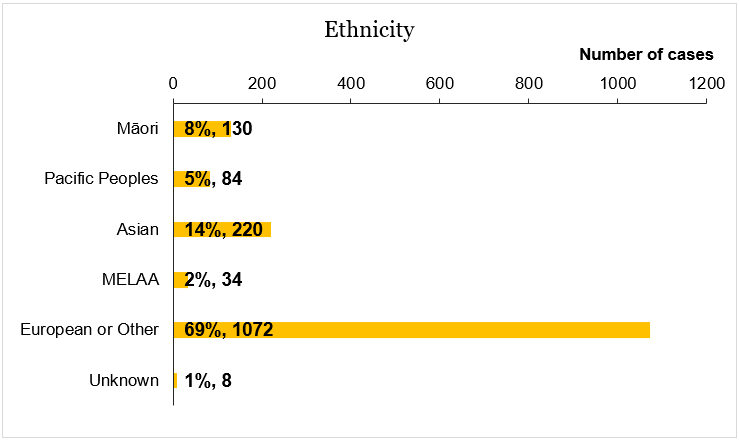
15 July NZ Prime Minister releases government’s COVID-19 response framework in case of a community-transmission outbreak in NZ, involving regional and localised lockdowns, based on similar plans in Victoria, NSW, Hong Kong, Singapore, and South Korea.
19 July Announcement that face-coverings will be mandatory in Melbourne from July 22
23 July 403 new cases in 24 hours announced in Victoria, with a total of 7,125 active cases in the state
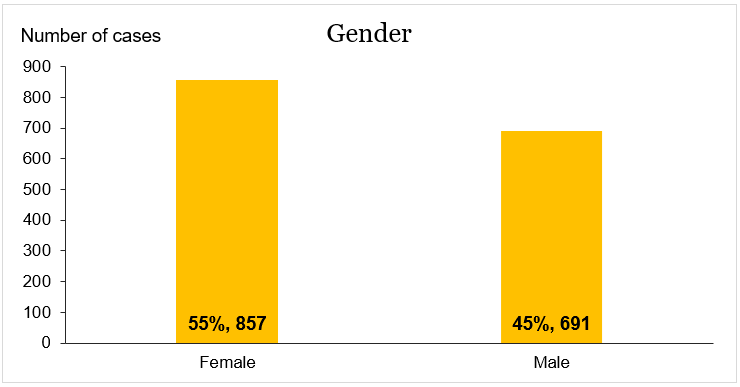
29 July NZ announcement made that some travellers entering New Zealand would have to pay for their 14-day managed isolation. Those impacted would be those who left NZ after the rules came into effect, those who intend to stay in NZ for less than 90 days, and most temporary visa holders (with some exceptions). Most New Zealanders returning home would remain exempt however.
30 July 723 new cases in 24 hours announced in Victoria, with a total of 9,998 active cases in the state.
August 2020
2 August A state of disaster was declared in Victoria, including a curfew in Melbourne from 8pm to 5am. Victoria was to institute regional stage 3 restrictions, with Melbourne at stage 4.
4 August The number of active cases in New Zealand is 22 (all in managed isolation, arrivals from overseas)
5 August 725 new cases in 24 hours announced in Victoria, with a total of 13,035 active cases in the state. Data released from StatsNZ showed that in the June quarter labour market statistics for NZ, of the 11,000 people who were no longer in paid employment (employment fell 0.4%) 10,000 were women (91%).
9 August New Zealand went 100 days with no community spread of COVID19 (in other word, all cases in New Zealand are in managed isolation from border entries)
11 August Four cases of community transmission are discovered in Auckland, all from the same family with no link to overseas travel or managed-isolation/quarantine facilities. Prime Minister announces that as at midday on Wednesday the 12th of August the entire Auckland region would be moving back to Alert Level 3 until midnight Friday the 14th, and the rest of the country would move back to Alert Level 2. This is the first deployment of a regional lockdown strategy.
12 August At midday the Auckland region goes back to Alert Level 3 lockdown, with the rest of the country at level 2. Police set up nine checkpoints in and out of the Auckland region to monitor who is entering and leaving the city.
13 August 13 new confirmed cases in New Zealand, 1 in managed isolation from an arrival from overseas, and 12 related to the family cluster announced on 11 August. All in Auckland. 15 testing centres are opened across Auckland, and testing centres have opened in Rotorua and Taupo (due to the family having travelled there on holiday).
14 August 13 new cases announced, of which 12 are confirmed, and 1 is probable. 2 of the new cases are in Tokoroa, but related to the Auckland cluster. The Prime Minister announces that the current Alert Level arrangement (Level 3 in Auckland, Level 2 for the rest of the country) will remain in place for another 12 days till 11.59pm on Wednesday the 26th of August, but that it will be reviewed on the 21st of August. The Wage Subsidy Scheme will be extended to include this new period of lockdown at Level 3 (will be available to the whole country due to Auckland’s economic effect on the rest of the country), as will be the COVID Leave Scheme to assist those required to be in isolation as a result of testing.
15 August 7 new cases reported, all confirmed, all from the new cluster, bringing the total number of active cases to 56. In Victoria, Australia, there are 303 new cases overnight, bringing the total cumulative cases (active and not) for the state to 16,517 (and for the country 23,035, making Victoria 72% of all cases in Australia).
16 August 13 new cases in New Zealand, all confirmed, 12 from the new cluster and one in managed isolation at the border. The total active cases is 69. Worldwide there has officially been over 21 and a half million confirmed cases, over 7 million current active cases, and nearly 775,000 deaths.
17 August The Prime Minister delays the New Zealand national election from September 19th to October 17th due to the level 3 lockdown in Auckland to allow extra time for campaigning, under urging from the opposition parties and New Zealand First. 9 new confirmed cases in New Zealand, all from the community cluster, total active cases are 78.
18 August 13 new cases reported in New Zealand, wherein 2 cases of community transmission that had previously not been associated with the cluster, one was connected via genomic testing, and another was separately linked to a managed isolation hotel in Auckland.
19 August Became compulsory for all businesses to display official government NZ COVID tracer QR codes at their doors.
24 August NZ Prime Minister Jacinda Ardern announces that the regional Alert Level 3 lockdown for Auckland would be extended to 11.59pm on Sunday the 30th of August 2020. Further, once at Alert Level 2 on Monday the 31st of August, Auckland would have a limit of 10 people for gatherings (50 for tangis and funerals)
26 August It is announced, by Health Minister Chris Hipkins, that from 11.59pm on Thursday the 3rd of September, it would be compulsory for all public transport providers (including ride-share vehicles) to provide official government NZ COVID tracer QR codes for passengers.
27 August Seven new cases confirmed (six from the known South Auckland cluster, one in managed isolation at the border), bringing active cases to 126.
30 August Prime Minister Ardern confirmed that Auckland would enter into what she was coining ‘Alert Level 2.5’ at 11.59pm that night, ending the regional lockdown, with the rest of the country remaining at Alert level 2. The PM apologised for incorrect messaging on the government ‘United against COVID-19’ Facebook page which called on all people living in South or West Auckland to get tested (only symptomatic people and those in higher risk spaces or occupation.
31 August Nine new confirmed cases reported and 15 recoveries, bringing total active cases to 131
Globally almost 13 million cases have been confirmed, with nearly 570,000 deaths. The US has over 3 million cases, with more than 135,000 deaths, and is the most affected country on Earth. Then follows Brazil, India, Russia, Peru, Chile, Mexico, and the United Kingdom.
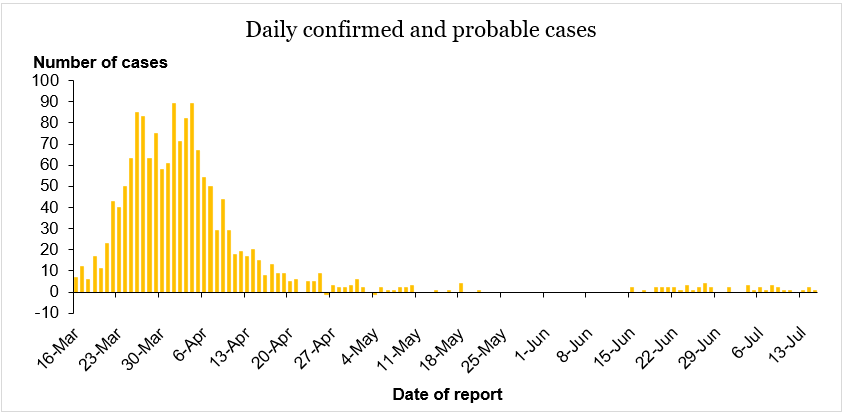
September 2020
1 September Internationally, global cases total over 25 million, with over 800,000 deaths. The WHO announces that the Region of the Americas accounts for nearly half of all new cases from the previous week
4 September NZ Prime Minister announces that New Zealand would remain on Alert Level 2, with Auckland at the colloquially known ‘Level 2.5’ till at least 11.59pm on the 16th of September. A decision on whether it should be extended will be made on the 14th of September. The 23rd person to die of COVID-19 in New Zealand is reported.
5 September Overnight the 24th person to die of COVID-19 in New Zealand is reported, former Cook Islands Prime Minister Joe Williams
7 September In Victoria, there are 1,718 active cases, with 41 new cases and 9 lives lost in the previous 24 hours, bringing the total cases for the state to 19,574.
8 September Six new confirmed cases in NZ over the prior 24 hours, bringing the total to 1,782, with 123 active cases. All active cases are either at the border or related to the Auckland August cluster, no other community transmission reported.
10 September There are now 45 cases associated with a sub-cluster of the South Auckland cluster at the Mt Roskill Evangelical Fellowship church. Over 80% of the church have been tested.
14 September Announced that 89 people were close contacts with someone that had attended a gym before being tested positive for COVID-19, all these people were advised to self-isolate for 2 weeks. The New Zealand Government extended the ‘Alert Level 2.5’ setting for Auckland (and Level 2 for the rest of the country) for one more week, with an announcement to come on September 21st, though social distancing requirements were relaxed on public transport and planes. Deputy Prime Minister Winston Peters disagreed with the decision to extend.
15 September 30 people entered self-isolation after a household contact of a staff member at Auckland Prison tested positive for COVID-19.
16 September The 25th person to die of COVID-19 in New Zealand is reported. The global number of cases of the virus approaches 30 million
19 September First new community-transmission case (one case) since 14 September is reported. All new cases since that date had been at the border.
20 September There are 71 active cases in New Zealand, including one new case from a man after he was released from a two week mandatory quarantine at an isolation hotel, and giving two negative tests.
21 September No new cases reported in New Zealand. The New Zealand Prime Minister announces as at 11.59pm that evening, the country (except for Auckland) would be dropping to Alert Level 1. Auckland would be waiting till 11.59pm on Wednesday the 23rd, when the city would drop from 2.5 to Alert Level 2. A review of that alert level for Auckland would be undertaken on October 5th.
23 September Six historic cases are reported in the Waikato, exposed by a family member visiting from Italy. This person is now classified as New Zealand’s earliest case of COVID-19, as they reported feeling symptoms from 21 February, and the previous earliest case was reported on the 28th of February.
24 September Auckland moves to Alert Level 2
25 September Two new cases reported, one at the border, the other of community transmission.
27 September The number of active cases in hospital in New Zealand drops to 1.
29 September No new cases of community transmission in New Zealand, the total number is 1835 (recovered 1755, active cases 55, with 25 deaths).
International: the world-wide COVID-19 death toll surpasses one million
October 2020
1 October A trans-Tasman ‘bubble’ came into effect, where New Zealanders would be able to go to NSW, ACT, and the NT without having to undergo quarantine. However, the reverse would not be the case, with all Australians having to go through quarantine if coming to New Zealand.
2 October No new cases in New Zealand (community or border). All new cases since 29 September have been at the border. President Donald Trump is diagnosed with COVID-19
7 October Last active community case in New Zealand recovers, remaining active cases are all in managed isolation
8 October Auckland joins the rest of the country back at Alert Level 1
11 October Victoria’s State of Emergency and State of Disaster is extended through November 8th
12 October New Zealand Government announces it has purchased two vaccines, and that it is negotiating with other pharmaceutical companies for their vaccines too. Additionally a fund was being set up to cover the immunisation programme.
18 October One new community case (plus two new in managed isolation) in Auckland, after working on a ship that had been docked in the Ports of Auckland and Tauranga. Immediately put himself in self isolation and got tested when first developed symptoms, which mitigated potential spread. Infection was traced, thanks to assistance from Australian authorities, to two cases onboard one particular ship that had since moved on there.
19 October Restrictions eased in Victoria with time limits on exercise and socialising lifted, outdoor groups of up to 10 people allowed, and some outdoor sports settings could reopen, hair-dressing, real estate, home maintenance, and some health services.
21 October 2 new community cases related to the single community case of the ship worker announced on the 18th of October
23 October Nine new cases reported, but only 1 was a community transmission, being a household contact of the three related to the ship worker transmission
27 October In Victoria people no longer need a reason to leave the house, and retail, restaurants, hotels, cafes, and bars could reopen with capacity restrictions, and funerals and faith gatherings could occur with limited numbers
31 October The total number of cases in New Zealand stands at just under two thousand, 75 active cases, 25 deaths, and the rest recovered.
Global infection cases have surpassed 60 million

November 2020
1 November Australia records first occurrence of zero community transmission cases since early June.
2 November A new community transmission occurs in Christchurch, a staff member at a managed isolation facility hosting a number of foreign fishermen.
3 November A high school student connected to the previous Christchurch managed isolation staff member becomes the second community transmission case, and later in the day a second staff member from the same managed isolation facility, a friend of the first, becomes another.
6 November One new community transmission reported (a managed isolation worker) in Auckland
8 November There have been over 50 million cases globally, and 1.25 million deaths
9 November The United States of America surpasses 10 million cases
12 November Two community transmissions linked to a Defence Force worker and a student living in the Auckland CBD.
18 November The United States of American surpasses 250,000 deaths from COVID-19
21 November One new community transmission reported (border worker who was a close contact of the cluster earlier in the month)
26 November Six members of the Pakistani National Cricket Team, while in isolation, tested positive. Team-members were cautioned for flouting self-isolation protocols
27 November Victoria records 28 consecutive days without recording any new infections or deaths, which is the benchmark for eliminating COVID from the community
29 November Another member of the Pakistani National Cricket Team confirmed as testing positive
30 November New Zealand has had a total of 2,056 cases, recovered 1,959 cases, active 72 cases (67 in managed isolation, five from the community, and the death toll remains at 25
December 2020
3 December The United States of America surpasses 14 million cases
7 December Ministry of Health announces that it would be reducing the frequency of daily COVID-19 updates to four days a week: Monday, Wednesday, Friday, and Sunday. The United States of American surpasses 15 million cases
11 December Worldwide there have been 70 million cases, 49 million recoveries, and 1.5 million deaths.
12 December An Air New Zealand crew member, who had returned from the US on 9 December, tested positive. The United States of America surpasses 16 million cases
14 December The UK announces a new variant of the virus that has been identified as being responsible for a rapid rise in cases
17 December The United States of American surpasses 17 million cases. Prime Minister announces that two more vaccines had been purchased New Zealand, the Cook Islands, Niue, Tokelau, Samoa, Tonga, and Tuvalu. Vaccines would be free for New Zealanders.
18 December In Australia, Sydney’s Northern Beaches are declared a national COVID-19 hotspot after an outbreak leads to 28 cases. South Africa announces a new variant of the virus that is more prevalent in young people with no underlying health conditions
19 December 23 more cases associated with the Northern Beaches cluster in Australia. The UK surpasses 2 million cases
20 December 28 more cases associated with the North Beaches cluster, social gatherings restrictions are put in place, as are controls on border crossings
21 December 15 more cases reported associated with the Northern Beaches cluster. The United States of America surpasses 18 million cases
26 December Total number of cases worldwide surpasses 80 million
27 December The United States of America surpasses 19 million cases
31 December New Zealand has had a total of 2,162 cases, of which 2,082 have recovered, with 55 active (all in managed isolation), and the death toll remains at 25.
